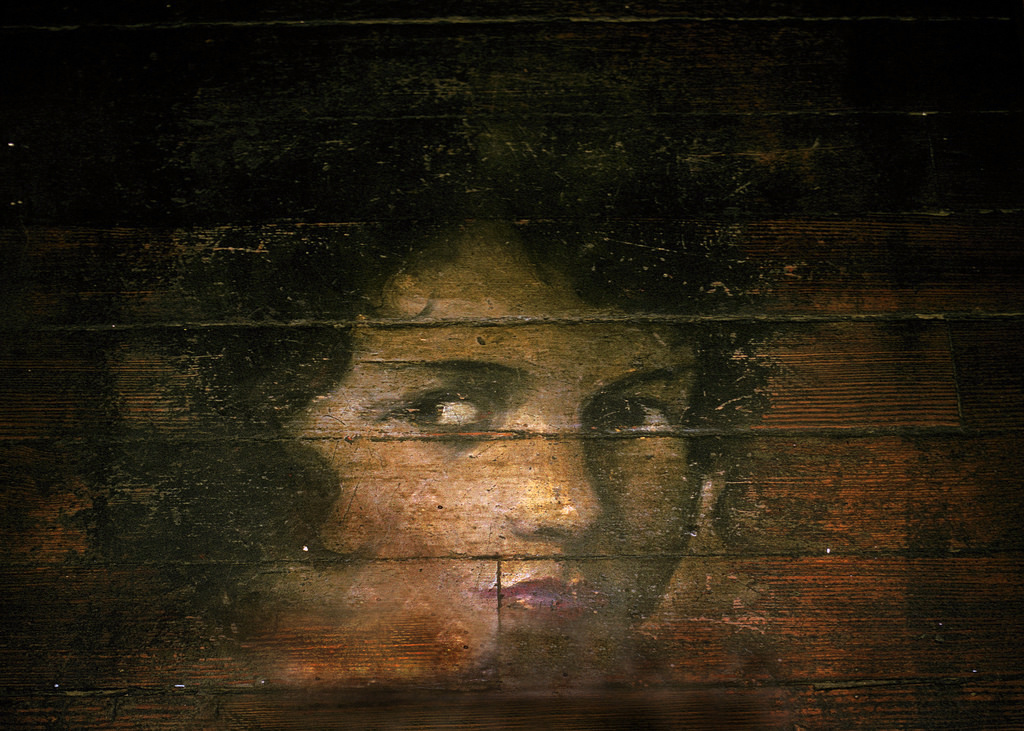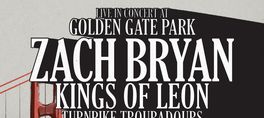In celebration of Henry Mollicone (a long time San Jose resident) and the 40th Anniversary of his opera, The Face on the Barroom Floor, audiences will enjoy a live performance of the opera followed by clips from “The Face on the Barroom Floor: The Poem, the Place, the Opera”, a film directed by Rhode Island-based filmmaker Lawrence Kraman, written by David Patrick Stearns, and edited by an impressive young filmmaker, Dillon Poole, The Face on the Barroom Floor will take viewers on a historical, musical, and poetic journey. Other songs which Mr. Mollicone has written throughout his illustrious career will be performed during the celebration.
Tickets: $40 - $50 Online at https://www.3Belowtheaters.com or 408.404.7711
Performances: Friday, August 24 and Saturday, August 25 at 7:30pm. Sunday, August 26 at 2pm
Validated on-site parking.
Photo: Image of the actual painting on the floor of the Teller House Hotel in Central City, Colorado. Courtesy of 3Below Theaters.
Tourists and opera-goers in Colorado regularly stop in the “Face Bar” at the Teller House to see the chestnut-haired enchantress painted on the floor. Though unsigned, the famous face on the floor of the Teller House bar is credited to Denver artist Herndon Davis, who was inspired by Hugh Antoine D’Arcy’s poem The Face Upon the Floor. The actual subject of the painting is not known for certain but is believed to be Davis’ wife Edna Juanita (Nita).
In 1978, a work commissioned by the fifth oldest opera company in the nation, the Central City Opera Company in Central City, Colorado, became one of the most performed modern American operas worldwide. “The Face On The Barroom Floor,” with music by Henry Mollicone and a libretto by John Bowman, took its inspiration from a painting of a female face on the floor of the Teller House bar that stands adjacent to the Opera House.
The opera tells two tales, separated in time, but parallel in character and theme. Modern day Isabel is a singer in the Central City Opera chorus who dreams of singing Violetta in La Traviata. The beautiful Madeline is a saloon girl in a 19th-century gold camp. Both are loved by two men, and as the opera moves between centuries, the parallel plots come to the same tragic end – a timeless tale of love and jealousy. Just thirty minutes long, The Face on the Barroom Floor is regarded as a showcase for rising talent, playing in regional opera companies with “a cult-like success” (The New Yorker.)
A Fascinating Backstory
Hugh Antoine d’Arcy’s “The Face Upon The Floor” was inspired by a supposed occurrence in 1872 at Joe Smith’s Saloon at Fourth Avenue and 14th Street in Manhattan. Though d’Arcy’s work was first published in 1887 in the New York Dispatch, an earlier work based on the incident was written by the poet Henry James Titus and was published in 1872 in the Ashtabula (Ohio) Sentinel. Literary historians give recognition to both poets for each of their works, but unfortunately for Titus, it is d’Arcy’s poem that is more widely published and revered.
The story of “The Face” continues in 1939 when, as a late-night prank, a local artist sketched a face upon the floor of the historic Teller House Hotel in Central City, Colorado. With intentions of capitalizing on d’Arcy’s famed poem, the owners of the Teller House falsely advertised the face as the original one from d’Arcy’s work. Despite this inaccuracy, the face on the barroom floor of the Teller House is the number one tourist attraction in Central City.
With controversial and artistic origins such as this, it’s no wonder that d’Arcy’s poem has yielded a critically acclaimed 1914 silent film short directed by and starring Charlie Chaplin, and a 1923 John Ford film. It has been put to song and adapted for the stage, publicly recited in its entirety, and was even featured and illustrated in a 1954 issue of Mad Magazine. Decades later in 1978, composer Henry Mollicone and librettist John Bowman were commissioned to write the opera “The Face on the Barroom Floor” for the Central City Opera Company which is adjacent to the Teller House Hotel — the one-act production has been performed by the Company every season since.
The Poem
Written in ballad form, the poem tells of an artist ruined by love; having lost his beloved Madeline to another man, he has turned to drink. Entering a bar, the artist tells his story to the bartender and to the assembled crowd. He then offers to sketch Madeline's face on the floor of the bar but falls dead in the middle of his work.
Here is the full text:
'Twas a balmy summer evening, and a goodly crowd was there.
Which well-nigh filled Joe's bar-room on the corner of the square;
And as songs and witty stories came through the open door,
A vagabond crept slowly in and posed upon the floor.
"Where did it come from?" someone said, "The wind has blown it in."
"What does it want?" another cried. "Some whisky, rum or gin?"
"Here, Toby, sic him, if your stomach's equal to the work -
I wouldn't touch him with a fork, he's as filthy as a Turk."
This badinage the poor wretch took with stoical good grace;
In fact, he smiled as though he thought he'd struck the proper place.
"Come, boys, I know there's burly hearts among so good a crowd
To be in such good company would make a deacon proud."
"Give me a drink -- that's what I want -- I'm out of funds, you know;
When I had cash to treat the gang, this hand was never slow.
What? You laugh as though you thought this pocket never held a sou!
I once was fixed as well, my boys, as anyone of you."
"There, thanks; that's braced me nicely! God bless you one and all!
Next time I pass this good saloon, I'll make another call.
Give you a song? No, I can't do that, my singing days are past;
My voice is cracked, my throat's worn out, and my lungs are going fast."
"Say! Give me another whisky, and I'll tell you what I'll do
I'll tell you a funny story, and a fact, I promise, too.
That I was ever a decent man not one of you would think;
But I was, some four or five years back. Say, give me another drink."
"Fill her up, Joe, I want to put some life into my frame --
Such little drinks to a bum like me are miserably tame;
Five fingers -- there, that's the scheme - and corking whisky, too.
Well, here's luck, boys! and, landlord, my best regards to you!"
"You've treated me pretty kindly, and I'd like to tell you how
I came to be the dirty sot you see before you now.
As I told you, once I was a man, with muscle, frame and health,
And, but for a blunder, ought to have made considerable wealth."
"I was a painter -- not one that daubed on bricks and wood
But an artist, and, for my age, was rated pretty good.
I worked hard at my canvas and was bidding fair to rise,
For gradually I saw the star of fame before my eyes."
"I made a picture, perhaps you've seen, 'tis called the 'Chase of Fame.'
It brought me fifteen hundred pounds and added to my name.
And then I met a woman -- now comes the funny part --
With eyes that petrified my brain, and sunk into my heart."
"Why don't you laugh? 'Tis funny that the vagabond you see
Could ever love a woman and expect her love for me;
But 'twas so, and for a month or two her smiles were freely given,
And when her loving lips touched mine it carried me to heaven."
"Did you ever see a woman for whom your soul you'd give,
With a form like the Milo Venus, too beautiful to live;
With eyes that would beat the Koh-i-noor, and a wealth of chestnut hair?
If so, 'twas she, for there never was another half so fair."
"I was working on a portrait, one afternoon in May,
Of a fair-haired boy, a friend of mine, who lived across the way,
And Madeleine admired it, and, much to my surprise,
Said that she'd like to know the man that had such dreamy eyes."
"It didn't take long to know him, and before the month had flown
My friend had stolen my darling, and I was left alone;
And, ere a year of misery had passed above my head,
The jewel I had treasured so had tarnished, and was dead."
"That's why I took to drink, boys. Why, I never saw you smile!
I thought you'd be amused, and laughing all the while.
Why, what's the matter, friend? There's a teardrop in your eye,
Come, laugh, like me; 'tis only babies and women that should cry."
"Say, boys, if you give me just another whisky, I'll be glad,
And I'll draw right here a picture of the face that drove me mad.
Give me that piece of chalk with which you mark the baseball score --
You shall see the lovely Madeleine upon the bar-room floor."
Another drink, and with chalk in hand the vagabond began
To sketch a face that well might buy the soul of any man.
Then, as he placed another lock upon the shapely head,
With a fearful shriek, he leaped and fell across the picture -- dead.
###
show less
Tickets: $40 - $50 Online at https://www.3Belowtheaters.com or 408.404.7711
Performances: Friday, August 24 and Saturday, August 25 at 7:30pm. Sunday, August 26 at 2pm
Validated on-site parking.
Photo: Image of the actual painting on the floor of the Teller House Hotel in Central City, Colorado. Courtesy of 3Below Theaters.
Tourists and opera-goers in Colorado regularly stop in the “Face Bar” at the Teller House to see the chestnut-haired enchantress painted on the floor. Though unsigned, the famous face on the floor of the Teller House bar is credited to Denver artist Herndon Davis, who was inspired by Hugh Antoine D’Arcy’s poem The Face Upon the Floor. The actual subject of the painting is not known for certain but is believed to be Davis’ wife Edna Juanita (Nita).
In 1978, a work commissioned by the fifth oldest opera company in the nation, the Central City Opera Company in Central City, Colorado, became one of the most performed modern American operas worldwide. “The Face On The Barroom Floor,” with music by Henry Mollicone and a libretto by John Bowman, took its inspiration from a painting of a female face on the floor of the Teller House bar that stands adjacent to the Opera House.
The opera tells two tales, separated in time, but parallel in character and theme. Modern day Isabel is a singer in the Central City Opera chorus who dreams of singing Violetta in La Traviata. The beautiful Madeline is a saloon girl in a 19th-century gold camp. Both are loved by two men, and as the opera moves between centuries, the parallel plots come to the same tragic end – a timeless tale of love and jealousy. Just thirty minutes long, The Face on the Barroom Floor is regarded as a showcase for rising talent, playing in regional opera companies with “a cult-like success” (The New Yorker.)
A Fascinating Backstory
Hugh Antoine d’Arcy’s “The Face Upon The Floor” was inspired by a supposed occurrence in 1872 at Joe Smith’s Saloon at Fourth Avenue and 14th Street in Manhattan. Though d’Arcy’s work was first published in 1887 in the New York Dispatch, an earlier work based on the incident was written by the poet Henry James Titus and was published in 1872 in the Ashtabula (Ohio) Sentinel. Literary historians give recognition to both poets for each of their works, but unfortunately for Titus, it is d’Arcy’s poem that is more widely published and revered.
The story of “The Face” continues in 1939 when, as a late-night prank, a local artist sketched a face upon the floor of the historic Teller House Hotel in Central City, Colorado. With intentions of capitalizing on d’Arcy’s famed poem, the owners of the Teller House falsely advertised the face as the original one from d’Arcy’s work. Despite this inaccuracy, the face on the barroom floor of the Teller House is the number one tourist attraction in Central City.
With controversial and artistic origins such as this, it’s no wonder that d’Arcy’s poem has yielded a critically acclaimed 1914 silent film short directed by and starring Charlie Chaplin, and a 1923 John Ford film. It has been put to song and adapted for the stage, publicly recited in its entirety, and was even featured and illustrated in a 1954 issue of Mad Magazine. Decades later in 1978, composer Henry Mollicone and librettist John Bowman were commissioned to write the opera “The Face on the Barroom Floor” for the Central City Opera Company which is adjacent to the Teller House Hotel — the one-act production has been performed by the Company every season since.
The Poem
Written in ballad form, the poem tells of an artist ruined by love; having lost his beloved Madeline to another man, he has turned to drink. Entering a bar, the artist tells his story to the bartender and to the assembled crowd. He then offers to sketch Madeline's face on the floor of the bar but falls dead in the middle of his work.
Here is the full text:
'Twas a balmy summer evening, and a goodly crowd was there.
Which well-nigh filled Joe's bar-room on the corner of the square;
And as songs and witty stories came through the open door,
A vagabond crept slowly in and posed upon the floor.
"Where did it come from?" someone said, "The wind has blown it in."
"What does it want?" another cried. "Some whisky, rum or gin?"
"Here, Toby, sic him, if your stomach's equal to the work -
I wouldn't touch him with a fork, he's as filthy as a Turk."
This badinage the poor wretch took with stoical good grace;
In fact, he smiled as though he thought he'd struck the proper place.
"Come, boys, I know there's burly hearts among so good a crowd
To be in such good company would make a deacon proud."
"Give me a drink -- that's what I want -- I'm out of funds, you know;
When I had cash to treat the gang, this hand was never slow.
What? You laugh as though you thought this pocket never held a sou!
I once was fixed as well, my boys, as anyone of you."
"There, thanks; that's braced me nicely! God bless you one and all!
Next time I pass this good saloon, I'll make another call.
Give you a song? No, I can't do that, my singing days are past;
My voice is cracked, my throat's worn out, and my lungs are going fast."
"Say! Give me another whisky, and I'll tell you what I'll do
I'll tell you a funny story, and a fact, I promise, too.
That I was ever a decent man not one of you would think;
But I was, some four or five years back. Say, give me another drink."
"Fill her up, Joe, I want to put some life into my frame --
Such little drinks to a bum like me are miserably tame;
Five fingers -- there, that's the scheme - and corking whisky, too.
Well, here's luck, boys! and, landlord, my best regards to you!"
"You've treated me pretty kindly, and I'd like to tell you how
I came to be the dirty sot you see before you now.
As I told you, once I was a man, with muscle, frame and health,
And, but for a blunder, ought to have made considerable wealth."
"I was a painter -- not one that daubed on bricks and wood
But an artist, and, for my age, was rated pretty good.
I worked hard at my canvas and was bidding fair to rise,
For gradually I saw the star of fame before my eyes."
"I made a picture, perhaps you've seen, 'tis called the 'Chase of Fame.'
It brought me fifteen hundred pounds and added to my name.
And then I met a woman -- now comes the funny part --
With eyes that petrified my brain, and sunk into my heart."
"Why don't you laugh? 'Tis funny that the vagabond you see
Could ever love a woman and expect her love for me;
But 'twas so, and for a month or two her smiles were freely given,
And when her loving lips touched mine it carried me to heaven."
"Did you ever see a woman for whom your soul you'd give,
With a form like the Milo Venus, too beautiful to live;
With eyes that would beat the Koh-i-noor, and a wealth of chestnut hair?
If so, 'twas she, for there never was another half so fair."
"I was working on a portrait, one afternoon in May,
Of a fair-haired boy, a friend of mine, who lived across the way,
And Madeleine admired it, and, much to my surprise,
Said that she'd like to know the man that had such dreamy eyes."
"It didn't take long to know him, and before the month had flown
My friend had stolen my darling, and I was left alone;
And, ere a year of misery had passed above my head,
The jewel I had treasured so had tarnished, and was dead."
"That's why I took to drink, boys. Why, I never saw you smile!
I thought you'd be amused, and laughing all the while.
Why, what's the matter, friend? There's a teardrop in your eye,
Come, laugh, like me; 'tis only babies and women that should cry."
"Say, boys, if you give me just another whisky, I'll be glad,
And I'll draw right here a picture of the face that drove me mad.
Give me that piece of chalk with which you mark the baseball score --
You shall see the lovely Madeleine upon the bar-room floor."
Another drink, and with chalk in hand the vagabond began
To sketch a face that well might buy the soul of any man.
Then, as he placed another lock upon the shapely head,
With a fearful shriek, he leaped and fell across the picture -- dead.
###
In celebration of Henry Mollicone (a long time San Jose resident) and the 40th Anniversary of his opera, The Face on the Barroom Floor, audiences will enjoy a live performance of the opera followed by clips from “The Face on the Barroom Floor: The Poem, the Place, the Opera”, a film directed by Rhode Island-based filmmaker Lawrence Kraman, written by David Patrick Stearns, and edited by an impressive young filmmaker, Dillon Poole, The Face on the Barroom Floor will take viewers on a historical, musical, and poetic journey. Other songs which Mr. Mollicone has written throughout his illustrious career will be performed during the celebration.
Tickets: $40 - $50 Online at https://www.3Belowtheaters.com or 408.404.7711
Performances: Friday, August 24 and Saturday, August 25 at 7:30pm. Sunday, August 26 at 2pm
Validated on-site parking.
Photo: Image of the actual painting on the floor of the Teller House Hotel in Central City, Colorado. Courtesy of 3Below Theaters.
Tourists and opera-goers in Colorado regularly stop in the “Face Bar” at the Teller House to see the chestnut-haired enchantress painted on the floor. Though unsigned, the famous face on the floor of the Teller House bar is credited to Denver artist Herndon Davis, who was inspired by Hugh Antoine D’Arcy’s poem The Face Upon the Floor. The actual subject of the painting is not known for certain but is believed to be Davis’ wife Edna Juanita (Nita).
In 1978, a work commissioned by the fifth oldest opera company in the nation, the Central City Opera Company in Central City, Colorado, became one of the most performed modern American operas worldwide. “The Face On The Barroom Floor,” with music by Henry Mollicone and a libretto by John Bowman, took its inspiration from a painting of a female face on the floor of the Teller House bar that stands adjacent to the Opera House.
The opera tells two tales, separated in time, but parallel in character and theme. Modern day Isabel is a singer in the Central City Opera chorus who dreams of singing Violetta in La Traviata. The beautiful Madeline is a saloon girl in a 19th-century gold camp. Both are loved by two men, and as the opera moves between centuries, the parallel plots come to the same tragic end – a timeless tale of love and jealousy. Just thirty minutes long, The Face on the Barroom Floor is regarded as a showcase for rising talent, playing in regional opera companies with “a cult-like success” (The New Yorker.)
A Fascinating Backstory
Hugh Antoine d’Arcy’s “The Face Upon The Floor” was inspired by a supposed occurrence in 1872 at Joe Smith’s Saloon at Fourth Avenue and 14th Street in Manhattan. Though d’Arcy’s work was first published in 1887 in the New York Dispatch, an earlier work based on the incident was written by the poet Henry James Titus and was published in 1872 in the Ashtabula (Ohio) Sentinel. Literary historians give recognition to both poets for each of their works, but unfortunately for Titus, it is d’Arcy’s poem that is more widely published and revered.
The story of “The Face” continues in 1939 when, as a late-night prank, a local artist sketched a face upon the floor of the historic Teller House Hotel in Central City, Colorado. With intentions of capitalizing on d’Arcy’s famed poem, the owners of the Teller House falsely advertised the face as the original one from d’Arcy’s work. Despite this inaccuracy, the face on the barroom floor of the Teller House is the number one tourist attraction in Central City.
With controversial and artistic origins such as this, it’s no wonder that d’Arcy’s poem has yielded a critically acclaimed 1914 silent film short directed by and starring Charlie Chaplin, and a 1923 John Ford film. It has been put to song and adapted for the stage, publicly recited in its entirety, and was even featured and illustrated in a 1954 issue of Mad Magazine. Decades later in 1978, composer Henry Mollicone and librettist John Bowman were commissioned to write the opera “The Face on the Barroom Floor” for the Central City Opera Company which is adjacent to the Teller House Hotel — the one-act production has been performed by the Company every season since.
The Poem
Written in ballad form, the poem tells of an artist ruined by love; having lost his beloved Madeline to another man, he has turned to drink. Entering a bar, the artist tells his story to the bartender and to the assembled crowd. He then offers to sketch Madeline's face on the floor of the bar but falls dead in the middle of his work.
Here is the full text:
'Twas a balmy summer evening, and a goodly crowd was there.
Which well-nigh filled Joe's bar-room on the corner of the square;
And as songs and witty stories came through the open door,
A vagabond crept slowly in and posed upon the floor.
"Where did it come from?" someone said, "The wind has blown it in."
"What does it want?" another cried. "Some whisky, rum or gin?"
"Here, Toby, sic him, if your stomach's equal to the work -
I wouldn't touch him with a fork, he's as filthy as a Turk."
This badinage the poor wretch took with stoical good grace;
In fact, he smiled as though he thought he'd struck the proper place.
"Come, boys, I know there's burly hearts among so good a crowd
To be in such good company would make a deacon proud."
"Give me a drink -- that's what I want -- I'm out of funds, you know;
When I had cash to treat the gang, this hand was never slow.
What? You laugh as though you thought this pocket never held a sou!
I once was fixed as well, my boys, as anyone of you."
"There, thanks; that's braced me nicely! God bless you one and all!
Next time I pass this good saloon, I'll make another call.
Give you a song? No, I can't do that, my singing days are past;
My voice is cracked, my throat's worn out, and my lungs are going fast."
"Say! Give me another whisky, and I'll tell you what I'll do
I'll tell you a funny story, and a fact, I promise, too.
That I was ever a decent man not one of you would think;
But I was, some four or five years back. Say, give me another drink."
"Fill her up, Joe, I want to put some life into my frame --
Such little drinks to a bum like me are miserably tame;
Five fingers -- there, that's the scheme - and corking whisky, too.
Well, here's luck, boys! and, landlord, my best regards to you!"
"You've treated me pretty kindly, and I'd like to tell you how
I came to be the dirty sot you see before you now.
As I told you, once I was a man, with muscle, frame and health,
And, but for a blunder, ought to have made considerable wealth."
"I was a painter -- not one that daubed on bricks and wood
But an artist, and, for my age, was rated pretty good.
I worked hard at my canvas and was bidding fair to rise,
For gradually I saw the star of fame before my eyes."
"I made a picture, perhaps you've seen, 'tis called the 'Chase of Fame.'
It brought me fifteen hundred pounds and added to my name.
And then I met a woman -- now comes the funny part --
With eyes that petrified my brain, and sunk into my heart."
"Why don't you laugh? 'Tis funny that the vagabond you see
Could ever love a woman and expect her love for me;
But 'twas so, and for a month or two her smiles were freely given,
And when her loving lips touched mine it carried me to heaven."
"Did you ever see a woman for whom your soul you'd give,
With a form like the Milo Venus, too beautiful to live;
With eyes that would beat the Koh-i-noor, and a wealth of chestnut hair?
If so, 'twas she, for there never was another half so fair."
"I was working on a portrait, one afternoon in May,
Of a fair-haired boy, a friend of mine, who lived across the way,
And Madeleine admired it, and, much to my surprise,
Said that she'd like to know the man that had such dreamy eyes."
"It didn't take long to know him, and before the month had flown
My friend had stolen my darling, and I was left alone;
And, ere a year of misery had passed above my head,
The jewel I had treasured so had tarnished, and was dead."
"That's why I took to drink, boys. Why, I never saw you smile!
I thought you'd be amused, and laughing all the while.
Why, what's the matter, friend? There's a teardrop in your eye,
Come, laugh, like me; 'tis only babies and women that should cry."
"Say, boys, if you give me just another whisky, I'll be glad,
And I'll draw right here a picture of the face that drove me mad.
Give me that piece of chalk with which you mark the baseball score --
You shall see the lovely Madeleine upon the bar-room floor."
Another drink, and with chalk in hand the vagabond began
To sketch a face that well might buy the soul of any man.
Then, as he placed another lock upon the shapely head,
With a fearful shriek, he leaped and fell across the picture -- dead.
###
read more
Tickets: $40 - $50 Online at https://www.3Belowtheaters.com or 408.404.7711
Performances: Friday, August 24 and Saturday, August 25 at 7:30pm. Sunday, August 26 at 2pm
Validated on-site parking.
Photo: Image of the actual painting on the floor of the Teller House Hotel in Central City, Colorado. Courtesy of 3Below Theaters.
Tourists and opera-goers in Colorado regularly stop in the “Face Bar” at the Teller House to see the chestnut-haired enchantress painted on the floor. Though unsigned, the famous face on the floor of the Teller House bar is credited to Denver artist Herndon Davis, who was inspired by Hugh Antoine D’Arcy’s poem The Face Upon the Floor. The actual subject of the painting is not known for certain but is believed to be Davis’ wife Edna Juanita (Nita).
In 1978, a work commissioned by the fifth oldest opera company in the nation, the Central City Opera Company in Central City, Colorado, became one of the most performed modern American operas worldwide. “The Face On The Barroom Floor,” with music by Henry Mollicone and a libretto by John Bowman, took its inspiration from a painting of a female face on the floor of the Teller House bar that stands adjacent to the Opera House.
The opera tells two tales, separated in time, but parallel in character and theme. Modern day Isabel is a singer in the Central City Opera chorus who dreams of singing Violetta in La Traviata. The beautiful Madeline is a saloon girl in a 19th-century gold camp. Both are loved by two men, and as the opera moves between centuries, the parallel plots come to the same tragic end – a timeless tale of love and jealousy. Just thirty minutes long, The Face on the Barroom Floor is regarded as a showcase for rising talent, playing in regional opera companies with “a cult-like success” (The New Yorker.)
A Fascinating Backstory
Hugh Antoine d’Arcy’s “The Face Upon The Floor” was inspired by a supposed occurrence in 1872 at Joe Smith’s Saloon at Fourth Avenue and 14th Street in Manhattan. Though d’Arcy’s work was first published in 1887 in the New York Dispatch, an earlier work based on the incident was written by the poet Henry James Titus and was published in 1872 in the Ashtabula (Ohio) Sentinel. Literary historians give recognition to both poets for each of their works, but unfortunately for Titus, it is d’Arcy’s poem that is more widely published and revered.
The story of “The Face” continues in 1939 when, as a late-night prank, a local artist sketched a face upon the floor of the historic Teller House Hotel in Central City, Colorado. With intentions of capitalizing on d’Arcy’s famed poem, the owners of the Teller House falsely advertised the face as the original one from d’Arcy’s work. Despite this inaccuracy, the face on the barroom floor of the Teller House is the number one tourist attraction in Central City.
With controversial and artistic origins such as this, it’s no wonder that d’Arcy’s poem has yielded a critically acclaimed 1914 silent film short directed by and starring Charlie Chaplin, and a 1923 John Ford film. It has been put to song and adapted for the stage, publicly recited in its entirety, and was even featured and illustrated in a 1954 issue of Mad Magazine. Decades later in 1978, composer Henry Mollicone and librettist John Bowman were commissioned to write the opera “The Face on the Barroom Floor” for the Central City Opera Company which is adjacent to the Teller House Hotel — the one-act production has been performed by the Company every season since.
The Poem
Written in ballad form, the poem tells of an artist ruined by love; having lost his beloved Madeline to another man, he has turned to drink. Entering a bar, the artist tells his story to the bartender and to the assembled crowd. He then offers to sketch Madeline's face on the floor of the bar but falls dead in the middle of his work.
Here is the full text:
'Twas a balmy summer evening, and a goodly crowd was there.
Which well-nigh filled Joe's bar-room on the corner of the square;
And as songs and witty stories came through the open door,
A vagabond crept slowly in and posed upon the floor.
"Where did it come from?" someone said, "The wind has blown it in."
"What does it want?" another cried. "Some whisky, rum or gin?"
"Here, Toby, sic him, if your stomach's equal to the work -
I wouldn't touch him with a fork, he's as filthy as a Turk."
This badinage the poor wretch took with stoical good grace;
In fact, he smiled as though he thought he'd struck the proper place.
"Come, boys, I know there's burly hearts among so good a crowd
To be in such good company would make a deacon proud."
"Give me a drink -- that's what I want -- I'm out of funds, you know;
When I had cash to treat the gang, this hand was never slow.
What? You laugh as though you thought this pocket never held a sou!
I once was fixed as well, my boys, as anyone of you."
"There, thanks; that's braced me nicely! God bless you one and all!
Next time I pass this good saloon, I'll make another call.
Give you a song? No, I can't do that, my singing days are past;
My voice is cracked, my throat's worn out, and my lungs are going fast."
"Say! Give me another whisky, and I'll tell you what I'll do
I'll tell you a funny story, and a fact, I promise, too.
That I was ever a decent man not one of you would think;
But I was, some four or five years back. Say, give me another drink."
"Fill her up, Joe, I want to put some life into my frame --
Such little drinks to a bum like me are miserably tame;
Five fingers -- there, that's the scheme - and corking whisky, too.
Well, here's luck, boys! and, landlord, my best regards to you!"
"You've treated me pretty kindly, and I'd like to tell you how
I came to be the dirty sot you see before you now.
As I told you, once I was a man, with muscle, frame and health,
And, but for a blunder, ought to have made considerable wealth."
"I was a painter -- not one that daubed on bricks and wood
But an artist, and, for my age, was rated pretty good.
I worked hard at my canvas and was bidding fair to rise,
For gradually I saw the star of fame before my eyes."
"I made a picture, perhaps you've seen, 'tis called the 'Chase of Fame.'
It brought me fifteen hundred pounds and added to my name.
And then I met a woman -- now comes the funny part --
With eyes that petrified my brain, and sunk into my heart."
"Why don't you laugh? 'Tis funny that the vagabond you see
Could ever love a woman and expect her love for me;
But 'twas so, and for a month or two her smiles were freely given,
And when her loving lips touched mine it carried me to heaven."
"Did you ever see a woman for whom your soul you'd give,
With a form like the Milo Venus, too beautiful to live;
With eyes that would beat the Koh-i-noor, and a wealth of chestnut hair?
If so, 'twas she, for there never was another half so fair."
"I was working on a portrait, one afternoon in May,
Of a fair-haired boy, a friend of mine, who lived across the way,
And Madeleine admired it, and, much to my surprise,
Said that she'd like to know the man that had such dreamy eyes."
"It didn't take long to know him, and before the month had flown
My friend had stolen my darling, and I was left alone;
And, ere a year of misery had passed above my head,
The jewel I had treasured so had tarnished, and was dead."
"That's why I took to drink, boys. Why, I never saw you smile!
I thought you'd be amused, and laughing all the while.
Why, what's the matter, friend? There's a teardrop in your eye,
Come, laugh, like me; 'tis only babies and women that should cry."
"Say, boys, if you give me just another whisky, I'll be glad,
And I'll draw right here a picture of the face that drove me mad.
Give me that piece of chalk with which you mark the baseball score --
You shall see the lovely Madeleine upon the bar-room floor."
Another drink, and with chalk in hand the vagabond began
To sketch a face that well might buy the soul of any man.
Then, as he placed another lock upon the shapely head,
With a fearful shriek, he leaped and fell across the picture -- dead.
###
show less
Date/Times:
288 S 2nd Street, San Jose, CA 95113
The Best Events
Every Week in Your Inbox
From Our Sponsors
UPCOMING EVENTS
Great suggestion! We'll be in touch.
Event reviewed successfully.









